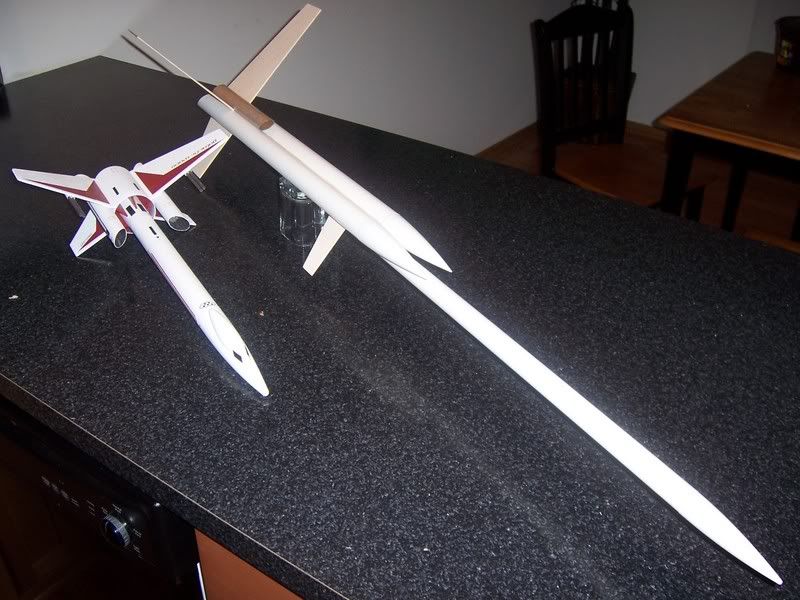Hey all,
I've been working on a project (
https://www.rocketryforum.com/showthread.php?t=9577), and as I'm doing the swing-testing and adding nose weight, I'm getting really close to 113g but not yet stable. According to the NAR website (
https://www.nar.org/SandT/pdf/Estes/C6.pdf), that 113g is the mass that Estes has recommended as the Max Liftoff Weight.
My question is, how critical is that Max Weight? If I go over by a few grams (115~120g total weight), will I be OK? I would have to imagine that there's some sort of safety margin built into that 113g spec.
Thanks,
EV
In the "Dark Ages" (Before computer simulations),the "max lif-off weight" rule of thumb was developed to predict the outcome of the average model launch using an average length launch rod. Today we have simple flight simulation programs so we can get pretty close if we know the weight and effective diameter of a rocket, and we have the thrust curve of the motor we intend to put in it.
For a model rocket we want to achieve a rod leaving velocity in excess of the minimum controlled airspeed of the rocket. If the minimum rod velocity is 20 mph, then you need a thrust to weight ratio of at least 5 to reach 20 mph with a 4' launch rod, and you will be on the rod for 0.23 seconds. A longer 6' rod would permit a safe lift-off with a T/W=3.5 but the rod time would increase to 0.37 seconds. A shorter 3' rod would permit a safe lift-off with a T/W=6 to 6.6 depending where the launch lug is located but the rod time would increase to 0.16-0.2 seconds.
Let's look at the Estes C6 thrust curve. The average thrust over the first 0.16 seconds is 6N, over 0.2 seconds of burn is 7N, over 0.25 seconds is 7.4N, and over 0.4 seconds is 6.5N. The max lift-off weight in grams is simple the average thrust in N over the rod time divided by the T/W ratio required to accelerate to 20 mph for a given rod length.
For a 4' rod the weight is 150 g, for a 6' rod it's 190 g, but for a 3' rod it ranges from 90 to 125 g depending on how far back you located the launch lug. Clearly, the 113 g max lift-off weight assumes a 3' launch rod.
The second issue is how high will the motor lift the rocket and still deploy a recovery system at apogee. A 150 g rocket on a 4' rod would use a C6-3 and deploy just after a 290' apogee. a 190 g rocket on a 6' rod would use a C6-3 and deploy a second after a 205' apogee which is ok, and a 113 g rocket on a 3' rod would also want a C6-3 and deploy at a 390' apogee.
Simulation using webalt.
https://www.markworld.com/
You have a rather draggy rocket so I wouldn't launch it if the wind is above 5 mph to avoid weathercocking.
Bob





